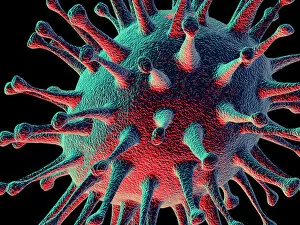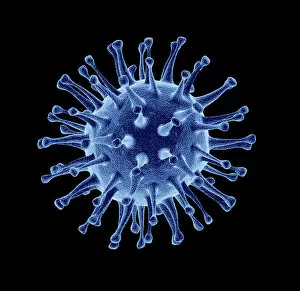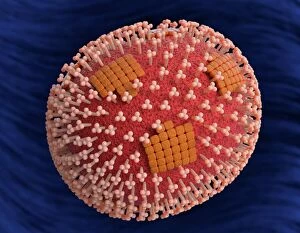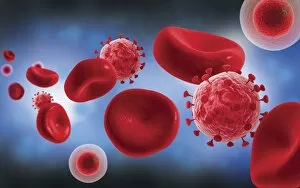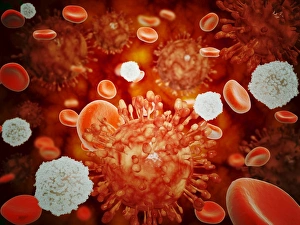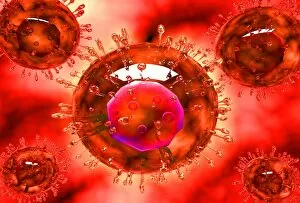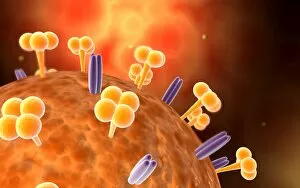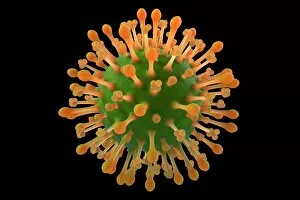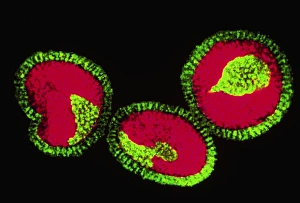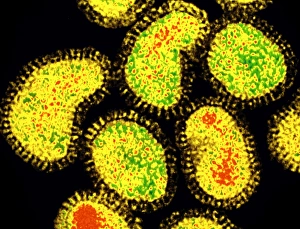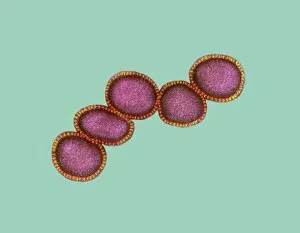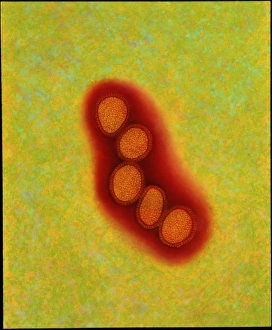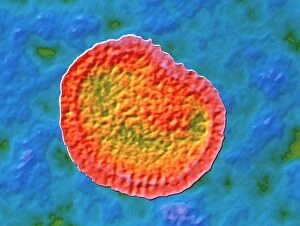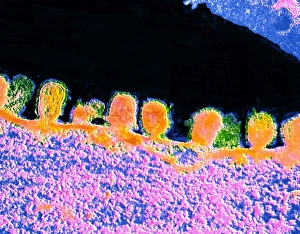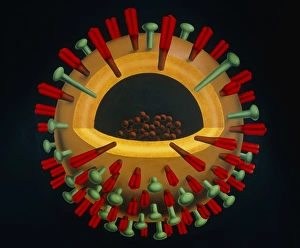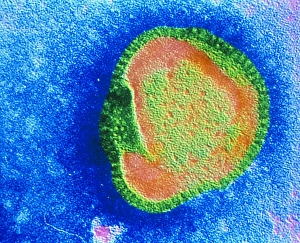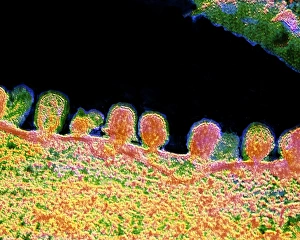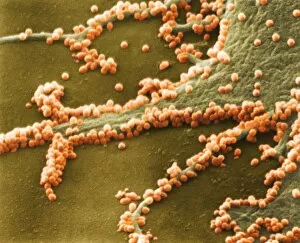Influenza Virus Collection
"Influenza Virus: Unveiling the Invisible Threat" Avian flu virus, also known as H5N1
All Professionally Made to Order for Quick Shipping
"Influenza Virus: Unveiling the Invisible Threat" Avian flu virus, also known as H5N1, is a highly contagious strain that poses a significant threat to both birds and humans. This microscopic entity, depicted in artwork F008 / 3245, showcases the intricate structure of the flu virus particle. A conceptual image of this influenza-causing virus brings forth its potential danger. With its ability to rapidly mutate and adapt, they can easily spread from person to person through respiratory droplets. The severity of symptoms varies from mild discomfort to life-threatening complications. In an astonishing glassy view, we witness a group of H5N1 viruses lurking within their host. These tiny invaders attach themselves to healthy cells in order to replicate and multiply at an alarming rate. Such images serve as a reminder of how crucial it is for us to stay vigilant against this ever-evolving enemy. Underneath the microscope's lens lies another captivating sight – blood cells intermingled with these malevolent viruses. This microscopic view unveils the battle taking place within our bodies as red and white blood cells strive tirelessly to combat the invading pathogens. As we delve deeper into understanding this influenza-causing flu virus, we realize that knowledge is our greatest weapon against it. By staying informed about preventive measures such as vaccination and practicing good hygiene habits like regular handwashing, we can minimize its impact on our lives. Let us not underestimate the power of awareness when facing this invisible threat. Together, let's unite in our efforts to protect ourselves and those around us from the grasp of influenza – for only by working together can we conquer this formidable adversary once and for all.

